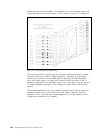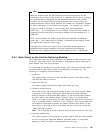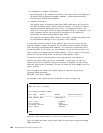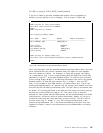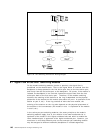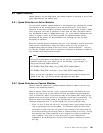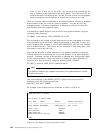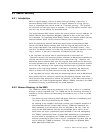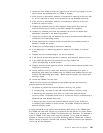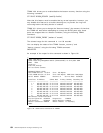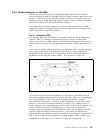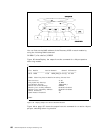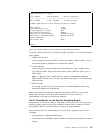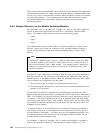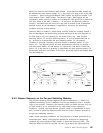To ensure that TRMM has an accurate ring map, you must issue the
following command for each port that has a MAC-less station (such as
token-ring tracing tools) attached to it:
SET PORT {slot.port} STATION_TYPE mac_not_present
8250 token-ring modules are shipped from the factory, with ″mac_present″ as
default, which must be used for normal stations.
You also need to issue the following command for each copper trunk port to
ensure the correct port-to-address mapping:
SET TRUNK {slot} RING_IN.{trunk port} NETWORK_MAP {external|internal}
In the above command you must specify
external
when the copper trunk port
is used to connect to a module on a different hub, and you must specify
internal
when the copper trunk port is used to connect to a module on the
same hub.
•
The Beacon packet. The Beacon packet contains the source of the
beaconing and its Nearest Active Upstream Neighbor (NAUN). The NAUN is
the destination address of this packet.
•
Information from the media modules indicating ports and trunks which have
just been enabled.
•
User setup indicating which ports have MAC-less stations (that is do not
participate in ring poll process).
•
User setup indicating the status of the external_beacon_recovery attribute on
the trunks.
With TRMM V3.0 the operator can issue the following commands for the
trunks:
SET TRUNK {slot} RING_IN.n EXTERNAL_BEACON_RECOVERY {exists|non_exists}
or
SET TRUNK {slot} RING_IN EXTERNAL_BEACON_RECOVERY {exists|non_exists}
The effects of issuing this command for a trunk are discussed later in this
section.
When beaconing is detected, the TRMM waits for up to 3 seconds to verify
beaconing is still active. The TRMM will then attempt to use the last current
logical map of the concentrator to determine the cause of the beaconing.
Depending on the reaction of other adapters to the beaconing condition (that is,
some adapters will be removed to test the beaconing condition) the map may
not EXACTLY represent the state of all ports at the exact time of beaconing.
This is why different steps of the algorithm are performed to attempt to find the
beaconing condition even if the map has changed.
The following steps will be taken to try to determine the cause of beaconing.
After each step, the algorithm will wait up to 10 seconds to verify that beaconing
is gone to see if an action worked. The 10 second delay is necessary to prevent
errors due to the cause of the beaconing removing itself to test its lobe port
connections at the same time an action is taken. This could erroneously cause a
port/trunk to be disabled which was not the source of the problem. If the action
did not fix the beaconing the TRMM will undo the action (that is, re-enable port if
it was disabled) and go to the next step.
1. Shut down the most likely cause of beaconing - new trunk connections
*
or
newly enabled ports (″new″ indicating TRMM has not seen a valid MAC
address after a port or trunk was enabled).
152 8260 Multiprotocol Intelligent Switching Hub



